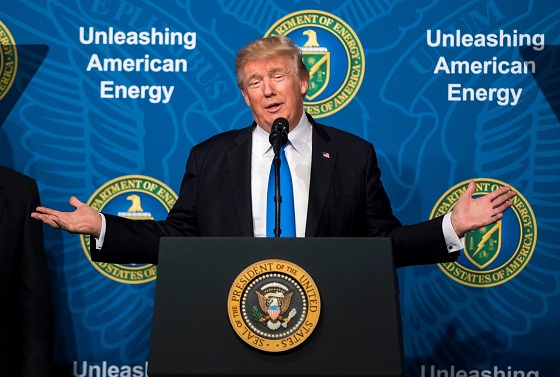Alberta
Highway twinning from Sylvan Lake to Rocky Mountain House among dozens of infrastructure projects beginning in Alberta

Alberta’s government is investing in roads, bridges, and water infrastructure to strengthen the economy and meet the needs of the province’s growing population.
As Alberta’s population continues to grow so does the need for safe, reliable and effective infrastructure to support communities across the province, attract investment and boost economic development. Maintaining and expanding the provincial road and bridge network is vital for growing communities and expanding market access for local industry.
If passed, Budget 2025 would invest more than $8.5 billion for the Ministry of Transportation and Economic Corridors’ three-year Capital Plan, a $333.7-million increase compared with Budget 2024. This total includes more than $4 billion over three years for transportation infrastructure projects to benefit rural communities across the province, as well as $2.1 billion over three years for projects in the Calgary region, and $2 billion for projects in the Edmonton region.
“We are investing in the transportation and water infrastructure our communities need to address rapid growth, promote economic development and support a high quality of life. These investments help ensure our province remains the best place in Canada to live, work and raise a family.”
The total capital investment in this year’s budget includes $2.6 billion for planning, design and construction of major highway and bridge projects. This work will create thousands of jobs across Alberta, improve traffic flow, and support the development of major trade corridors through projects such as twinning Highway 3 and Highway 11, and major improvements to Deerfoot Trail and Highway 881. Capital investment funding also includes more than $186 million over three years for more than 50 engineering projects to address future infrastructure needs as the province continues to grow.
“These investments in Calgary’s roads and bridges are critical to supporting our growing city. Improved infrastructure means safer commutes, better connections for businesses and a stronger foundation for future growth.”
If passed, Budget 2025 would also include a $1.7-billion investment over three years for capital maintenance and renewal, which extends the life of the province’s existing road and bridge network, keeping the highway network safe and helping industry create and maintain well-paying jobs.
“Building and fixing roads and bridges improves the productivity of Alberta’s economy. Budget 2025 continues investing in critical infrastructure using local materials and labour. The ARHCA applauds Alberta’s leadership and commitment to all modes of trade-enabling transportation.”
In addition to improving and maintaining the provincial highway network, Alberta’s government has allocated $3.9 billion for capital grants to municipalities over the next three years. This includes funding for LRT projects in Edmonton and Calgary, as well as $5 million in new funding to support planning work for a new transit solution connecting the Calgary airport terminal with the future Blue Line LRT extension station.
“Investing in infrastructure is critical to establishing a solid foundation for economic growth, sustainability and thriving communities. As our population continues to grow, we must make smart investments in roads, bridges, water and transportation infrastructure to ensure our communities and businesses remain vibrant, connected and ready for the future.”
If passed, targeted investments in Budget 2025 would also support the growth and prosperity of rural communities by providing $126.8 million over three years to municipalities through the Strategic Transportation Infrastructure Program. This program helps smaller municipalities improve critical local transportation infrastructure.
Additionally, ongoing capital grants totalling $519.7 million over three years in water and wastewater infrastructure will ensure Albertans in every community have reliable access to clean drinking water and effective wastewater services.
Finally, Budget 2025 would provide $240.1 million to build and repair water management infrastructure, including dams, spillways, canals and control structures. This investment provides irrigation for the agriculture sector and flood mitigation for Alberta communities.
Budget 2025 is meeting the challenge faced by Alberta with continued investments in education and health, lower taxes for families and a focus on the economy.
Quick Facts
Regional Highlights
North region
- Budget 2025, if passed, invests $1.25 billion over three years in road and bridge construction projects to benefit the North region, including:
- $101 million for Highway 63 twinning, north of Fort McMurray
- $141 million for Highway 881 safety and road improvements
- $87 million for construction of the La Crete bridge
- $69 million for Highway 40 grade widening between Hinton and Grande Cache
- $7 million for the La Loche Connector road – extending Highway 956 from La Loche, Saskatchewan to Fort McMurray
- $4 million for twinning Highway 40 south of Grande Prairie
- $127.5 million for Highway 60 Capital Improvements
Central region
- Budget 2025, if passed, invests $1.4 billion over three years in road and bridge construction projects to benefit the Central region, including:
- $208 million for Highway 11 twinning between Sylvan Lake and Rocky Mountain House
- $98 million for the Vinca Bridge replacement on Highway 38 (near Redwater) as part of work to enhance the high-load corridor
South region
- Budget 2025, if passed, invests $363 million over three years in road and bridge construction projects to benefit the South region, including:
- $106 million for Highway 3 twinning (between Taber and east of Burdett)
- $92 million for the Highway 2 Balzac Interchange Replacement
- $24 million for the Highway 1A upgrade (Stoney First Nation)
- $9 million for the QEII Highway and 40th Avenue interchange ramp (near Airdrie)
Calgary
- Budget 2025, if passed, invests $2.1 billion over three years in road and bridge construction projects, and municipal grants to benefit the Calgary region, including:
- $173.1 million for the Calgary Rivers District and Event Centre
- $484.8 million for Deerfoot Trail upgrades
- $62.4 million for the Springbank Off-stream Reservoir (SR1) project
- $11.9 million for the Bow River Reservoir (Ghost Reservoir Infrastructure Project)
- $100 million for the Calgary Ring Road (West Stoney Trail)
- $8 million for the completion of the Highway 201 Bow River Bridge on the southeast Stoney Trail
- $26.5 million for the completion of the Stoney Trail and Airport Trail interchange
Edmonton
- Budget 2025, if passed, invests $2 billion over three years in road and bridge construction projects to benefit the Edmonton region, including:
- $31.9 million for the Ray Gibbon Drive expansion
- $31 million for the Terwillegar Drive widening from Rabbit Hill Road to Windermere Boulevard
- $52.7 million for the Terwillegar Drive Expansion improvements to the interchange at SW Anthony Henday Drive.
- $20.3 million for Highway 16A and Range Road 20 Safety Improvements
- $17.2 million for Highway 19 twinning
- $40.2 million for the Highway 2 and 65 Avenue Interchange in Leduc
Alberta
Alberta government’s plan will improve access to MRIs and CT scans

From the Fraser Institute
By Nadeem Esmail and Tegan Hill
The Smith government may soon allow Albertans to privately purchase diagnostic screening and testing services, prompting familiar cries from defenders of the status quo. But in reality, this change, which the government plans to propose in the legislature in the coming months, would simply give Albertans an option already available to patients in every other developed country with universal health care.
It’s important for Albertans and indeed all Canadians to understand the unique nature of our health-care system. In every one of the 30 other developed countries with universal health care, patients are free to seek care on their own terms with their own resources when the universal system is unwilling or unable to satisfy their needs. Whether to access care with shorter wait times and a more rapid return to full health, to access more personalized services or meet a personal health need, or to access new advances in medical technology. But not in Canada.
That prohibition has not served Albertans well. Despite being one of the highest-spending provinces in one of the most expensive universal health-care systems in the developed world, Albertans endure some of the longest wait times for health care and some of the worst availability of advanced diagnostic and medical technologies including MRI machines and CT scanners.
Introducing new medical technologies is a costly endeavour, which requires money and the actual equipment, but also the proficiency, knowledge and expertise to use it properly. By allowing Albertans to privately purchase diagnostic screening and testing services, the Smith government would encourage private providers to make these technologies available and develop the requisite knowledge.
Obviously, these new providers would improve access to these services for all Alberta patients—first for those willing to pay for them, and then for patients in the public system. In other words, adding providers to the health-care system expands the supply of these services, which will reduce wait times for everyone, not just those using private clinics. And relief can’t come soon enough. In Alberta, in 2024 the median wait time for a CT scan was 12 weeks and 24 weeks for an MRI.
Greater access and shorter wait times will also benefit Albertans concerned about their future health or preventative care. When these Albertans can quickly access a private provider, their appointments may lead to the early discovery of medical problems. Early detection can improve health outcomes and reduce the amount of public health-care resources these Albertans may ultimately use in the future. And that means more resources available for all other patients, to the benefit of all Albertans including those unable to access the private option.
Opponents of this approach argue that it’s a move towards two-tier health care, which will drain resources from the public system, or that this is “American-style” health care. But these arguments ignore that private alternatives benefit all patients in universal health-care systems in the rest of the developed world. For example, Switzerland, Germany, the Netherlands and Australia all have higher-performing universal systems that provide more timely care because of—not despite—the private options available to patients.
In reality, the Smith government’s plan to allow Albertans to privately purchase diagnostic screening and testing services is a small step in the right direction to reduce wait times and improve health-care access in the province. In fact, the proposal doesn’t go far enough—the government should allow Albertans to purchase physician appointments and surgeries privately, too. Hopefully the Smith government continues to reform the province’s health-care system, despite ill-informed objections, with all patients in mind.
Alberta
Canada’s heavy oil finds new fans as global demand rises

From the Canadian Energy Centre
By Will Gibson
“The refining industry wants heavy oil. We are actually in a shortage of heavy oil globally right now, and you can see that in the prices”
Once priced at a steep discount to its lighter, sweeter counterparts, Canadian oil has earned growing admiration—and market share—among new customers in Asia.
Canada’s oil exports are primarily “heavy” oil from the Alberta oil sands, compared to oil from more conventional “light” plays like the Permian Basin in the U.S.
One way to think of it is that heavy oil is thick and does not flow easily, while light oil is thin and flows freely, like fudge compared to apple juice.
“The refining industry wants heavy oil. We are actually in a shortage of heavy oil globally right now, and you can see that in the prices,” said Susan Bell, senior vice-president of downstream research with Rystad Energy.
A narrowing price gap
Alberta’s heavy oil producers generally receive a lower price than light oil producers, partly a result of different crude quality but mainly because of the cost of transportation, according to S&P Global.
The “differential” between Western Canadian Select (WCS) and West Texas Intermediate (WTI) blew out to nearly US$50 per barrel in 2018 because of pipeline bottlenecks, forcing Alberta to step in and cut production.
So far this year, the differential has narrowed to as little as US$10 per barrel, averaging around US$12, according to GLJ Petroleum Consultants.
“The differential between WCS and WTI is the narrowest I’ve seen in three decades working in the industry,” Bell said.
Trans Mountain Expansion opens the door to Asia

Oil tanker docked at the Westridge Marine Terminal in Burnaby, B.C. Photo courtesy Trans Mountain Corporation
The price boost is thanks to the Trans Mountain expansion, which opened a new gateway to Asia in May 2024 by nearly tripling the pipeline’s capacity.
This helps fill the supply void left by other major regions that export heavy oil – Venezuela and Mexico – where production is declining or unsteady.
Canadian oil exports outside the United States reached a record 525,000 barrels per day in July 2025, the latest month of data available from the Canada Energy Regulator.
China leads Asian buyers since the expansion went into service, along with Japan, Brunei and Singapore, Bloomberg reports. 
Asian refineries see opportunity in heavy oil
“What we are seeing now is a lot of refineries in the Asian market have been exposed long enough to WCS and now are comfortable with taking on regular shipments,” Bell said.
Kevin Birn, chief analyst for Canadian oil markets at S&P Global, said rising demand for heavier crude in Asia comes from refineries expanding capacity to process it and capture more value from lower-cost feedstocks.
“They’ve invested in capital improvements on the front end to convert heavier oils into more valuable refined products,” said Birn, who also heads S&P’s Center of Emissions Excellence.
Refiners in the U.S. Gulf Coast and Midwest made similar investments over the past 40 years to capitalize on supply from Latin America and the oil sands, he said.
While oil sands output has grown, supplies from Latin America have declined.
Mexico’s state oil company, Pemex, reports it produced roughly 1.6 million barrels per day in the second quarter of 2025, a steep drop from 2.3 million in 2015 and 2.6 million in 2010.
Meanwhile, Venezuela’s oil production, which was nearly 2.9 million barrels per day in 2010, was just 965,000 barrels per day this September, according to OPEC.
The case for more Canadian pipelines

Worker at an oil sands SAGD processing facility in northern Alberta. Photo courtesy Strathcona Resources
“The growth in heavy demand, and decline of other sources of heavy supply has contributed to a tighter market for heavy oil and narrower spreads,” Birn said.
Even the International Energy Agency, known for its bearish projections of future oil demand, sees rising global use of extra-heavy oil through 2050.
The chief impediments to Canada building new pipelines to meet the demand are political rather than market-based, said both Bell and Birn.
“There is absolutely a business case for a second pipeline to tidewater,” Bell said.
“The challenge is other hurdles limiting the growth in the industry, including legislation such as the tanker ban or the oil and gas emissions cap.”
A strategic choice for Canada
Because Alberta’s oil sands will continue a steady, reliable and low-cost supply of heavy oil into the future, Birn said policymakers and Canadians have options.
“Canada needs to ask itself whether to continue to expand pipeline capacity south to the United States or to access global markets itself, which would bring more competition for its products.”
-

 Censorship Industrial Complex2 days ago
Censorship Industrial Complex2 days agoHow the UK and Canada Are Leading the West’s Descent into Digital Authoritarianism
-

 Business2 days ago
Business2 days agoCapital Flight Signals No Confidence In Carney’s Agenda
-

 International2 days ago
International2 days agoThe capital of capitalism elects a socialist mayor
-

 Daily Caller1 day ago
Daily Caller1 day agoUS Eating Canada’s Lunch While Liberals Stall – Trump Admin Announces Record-Shattering Energy Report
-

 Business1 day ago
Business1 day agoCarney’s budget spares tax status of Canadian churches, pro-life groups after backlash
-

 Justice1 day ago
Justice1 day agoCarney government lets Supreme Court decision stand despite outrage over child porn ruling
-

 Business2 days ago
Business2 days agoPulling back the curtain on the Carney government’s first budget
-

 Energy1 day ago
Energy1 day agoEby should put up, shut up, or pay up












